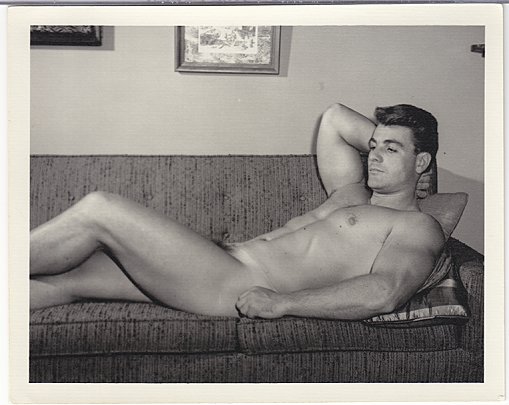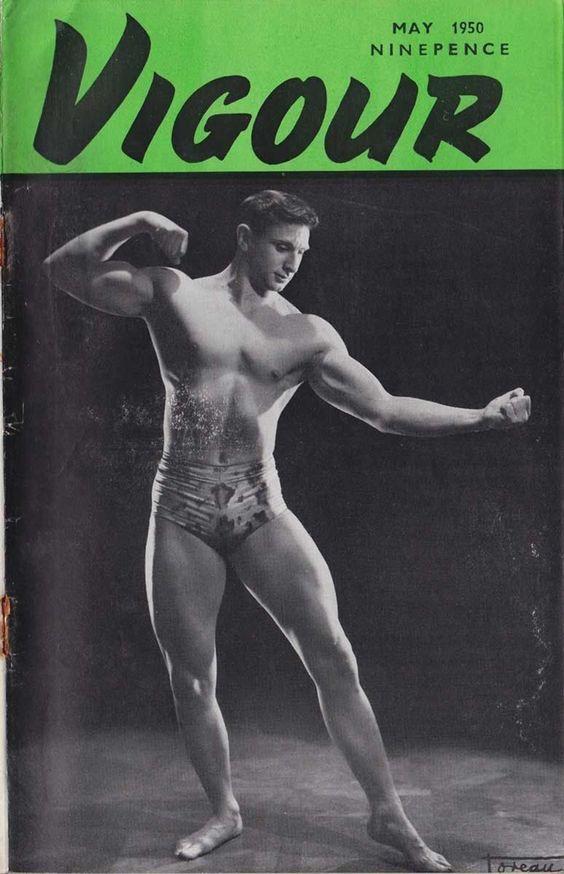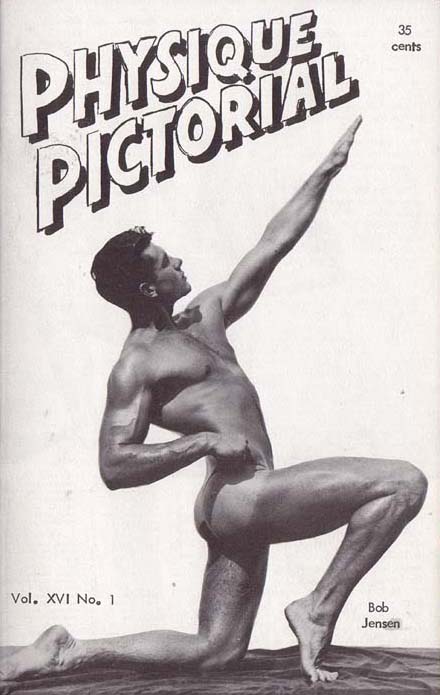Beefcake from across the pond: The male physique in Britain, part I
Author’s note: This is the first in a three-part series on the history of physique culture in Great Britain. Look for part II on our blog on Tuesday,...
2 min read
Bob Mizer Foundation : Jul 11, 2017 10:44:00 AM

Both longtime friends and Bob Mizer himself have stated that the photographer was all too happy to promote the work of other artists and studios. Mizer didn't see his contemporaries as competitors. Quite the opposite -- he believed that all experimental photographers had an obligation to further the cause of good art, no matter where it came from.
Though he sold Athletic Model Guild photo series, individual images and even posing straps in the early days of Physique Pictorial, Mizer also featured entire full-page advertisements touting the work of other photographers from other studios.
 Mizer, in the introduction to the November 1951 issue (Vol. 1, No. 2), informed readers that the magazine's initial press run was limited to only 5,000; he even encouraged readers to pass along their issue to another interested reader when finished with it. In addition, Mizer assured readers in the publication's second issue that his ad clients were required to possess reputations of integrity.
Mizer, in the introduction to the November 1951 issue (Vol. 1, No. 2), informed readers that the magazine's initial press run was limited to only 5,000; he even encouraged readers to pass along their issue to another interested reader when finished with it. In addition, Mizer assured readers in the publication's second issue that his ad clients were required to possess reputations of integrity.
"It was necessary to deny space to some firms who have had a bad customer relation record -- who have misrepresented the merchandise they sell, or who have failed to send material when (the) customer sent money," he stated.
The first advertisement appearing in Physique Pictorial was a two-page spread in that same issue, promoting Bruce of Los Angeles. The double-truck advertised photos of models exclusive to Bruce of L.A., as well as mainstream Hollywood stars both living (Steve Reeves) and dead (silent film star Rudolph Valentino, who had been dead for more than a quarter of a century by the time of publication).
Other ad clients included Russ Warner's Oakland-based Warner Studios (which sold individual photos of models for $2.50 apiece), Beverly Hills-based D'Art (which offered both 4x5" and 8x10" matted prints), Bob Delmonteque of Detroit, Kovert of Hollywood, New York-based Frank Giardina (which proudly displayed its flagship duo, the wrestling DiFalco brothers), and Chicago's Al Urban Studios.
Mizer had particular praise for Al Urban, whom Mizer granted space in which to promote his own up-and-coming physique publication. Urban's ad announced that he was to launch his own physique magazine in early 1952, offering a yearlong subscription for $2.50, two years for $5, and three years for $6. Daringly, Urban promised that his magazine would become "the leading physique publication in the world."
 As always, Mizer was gracious in voicing his support of a contemporary.
As always, Mizer was gracious in voicing his support of a contemporary.
"Al Urban's new magazine, which is to be a full-size feature magazine, is not to be confused with Physique Pictorial, (which) purports to be nothing more than an advertising booklet," he reminded readers in an editor's note. "We strongly urge support of Mr. Urban's new publication, which we feel will satisfy a long-felt need in the physique field."
Much has already been written about Mizer's liberal use of artist George Quaintance's illustrations from the early days of Physique Pictorial and throughout the first two decades of the magazine's life. Mizer didn't promote another illustrator until introducing his readers to Harry Bush in the January 1966 issue.
By the late 1960s, the Athletic Model Guild and Physique Pictorial had long-established names for themselves, and it was no longer necessary to sell ads to other male physique photography companies. Those ads all but disappeared as Mizer began to more heavily promote the sale of his own still images and the production of his films. Throughout the 1970s and 1980s, illustrations became scarce in Physique Pictorial’s pages as smaller, thumbnail images of more models replaced them.

Author’s note: This is the first in a three-part series on the history of physique culture in Great Britain. Look for part II on our blog on Tuesday,...

The first issue of Physique Pictorial was a scant 16 pages long (cover to cover), but stimulating nonetheless (at least at the time). Featuring a...

The 1960s brought on the rise of the quaalude, the creation of the key party and the discovery of those precocious Brits, the Beatles. For those...

Many types of men appeared throughout the pages of Bob Mizer’s "Physique Pictorial" over the years. The former all-American high school athlete. The...